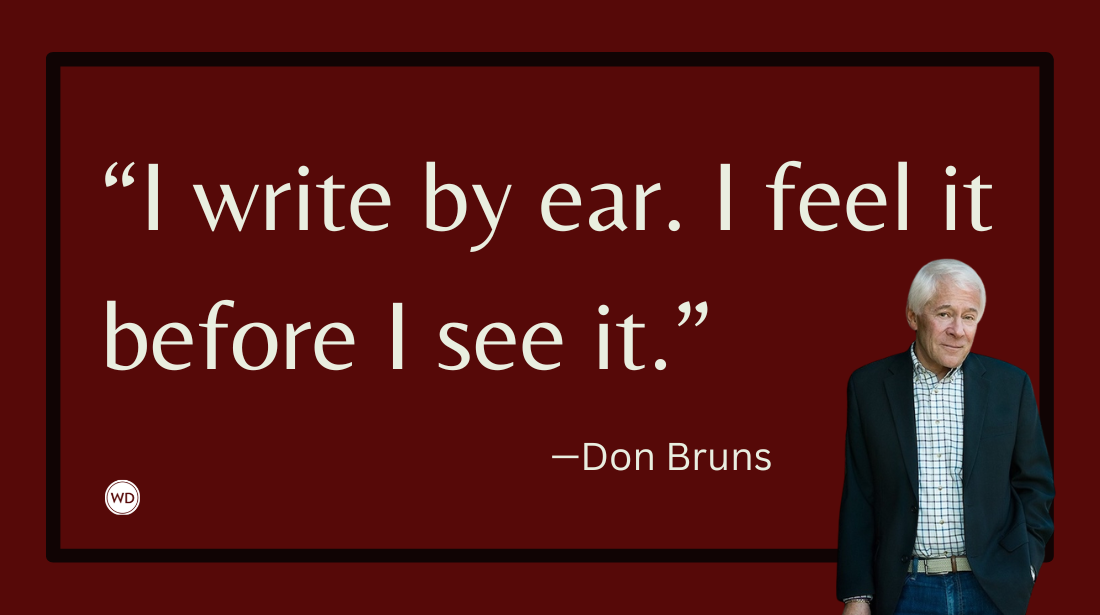5 Tips for Editing Dialogue
Here’s a guest post from Arlene F. Marks, author of From First Word to Last: The Craft of Writing Popular Fiction and The Accidental God, in which she shares her…
Here’s a guest post from Arlene F. Marks, author of From First Word to Last: The Craft of Writing Popular Fiction and The Accidental God, in which she shares her tips for editing dialogue. If you have a great idea and would like to contribute a guest post of your own, please send an e-mail to robert.brewer@fwcommunity.com with the subject line: Guest Post Idea for No Rules.
*****
Dialogue is the writer's equivalent of the Swiss army knife. What other storytelling tool lets you reveal character, advance the plot, establish the setting, and deliver a theme, all at the same time? Well-written dialogue is a fast and easy read. Ensure that the character conversations in your story will hum right along by catching and repairing the following "dialogue fumbles" at the editing stage:
1. Wooden dialogue
It's important to read dialogue aloud while editing it, because the words you put into your character's mouths need to sound natural and spontaneous coming back out. At the same time, unlike real people who often stammer and repeat themselves when conversing, fictional characters are expected to "talk edited." Here are two culprits in particular that make dialogue sound stiff and rehearsed:
Radio talk: In the heyday of radio drama, scriptwriters peppered the actors' dialogue with narrative details to help the listener picture each scene more clearly:
"Lucinda, why are you raising that hammer over your head?"
As you go through your manuscript, remove or revise speeches in which a character is doubling as narrator.
Unnecessary naming: Unless there is a good reason for doing so, including the name of the person being addressed can also make dialogue sound wooden:
"Congratulations on your promotion, Bob."
"Thanks, Janice."
"Are you planning to celebrate with your wife, Bob?"
"Yes, Janice. We're going out for dinner."
As you read through scenes of dialogue, be alert to excessive or unnecessary naming and trim it out.
*****
Write a Successful Novel for Today's Market
The publishing world is constantly evolving, but that evolution has shifted dramatically in the past decade. Learn how to find success in the current market with the assistance of the Writing a Successful Novel for Today's Market bundle.
This bundle collects all the resources a writer needs to figure out how to write and sell a novel in today's changing publishing market.
*****
2. Insignificant dialogue
Real life conversations often begin with exchanges such as: "How have you been? Nice weather we're having." We use small talk as a way to dispel initial discomfort, or to 'sound out' the other person before raising more sensitive or important topics.
As you edit your manuscript, consider whether there is any true dramatic purpose for your characters to engage in small talk (to betray nervousness, for example). If the preamble is insignificant, remove it and let the speakers get right down to business.
Similarly, look for speeches that recap things already known to every character in the scene. If the speaker has nothing new to say (or ask, or reveal) about the past event being recalled, then the reference as it stands is insignificant to the story. Either put it to work moving things forward or delete it.
3. Repetitive dialogue
Speeches of dialogue need to be edited as rigorously as any other part of a story, especially when it comes to 'trimming the fat' by getting rid of unnecessary repetition. Read each speech aloud; repeated words and idea echoes will pop out at you. For example: "He was elected unanimously. Everybody voted for him." (The second sentence is an echo and can be deleted.)
Sometimes entire scenes are repeated in dialogue, by a character who has experienced an event in an earlier part of the story and proceeds to describe it in detail to another character later on. If the scene has already been shown to the reader and this revisiting of it reveals nothing new about either the speaker or the listener, then the narrator can sum it up in a sentence: "He told Lawrence what had happened on the dock."
4. Naked dialogue
In every real-life conversation, there is an underlying subtext communicated by unspoken clues. Each speaker's state of mind and trustworthiness are revealed by such things as the speaker's posture, physical actions, facial expressions, and tone of voice. In order to bring a written scene of dialogue to life, you need to envision and communicate a subtext for it that the reader can picture in his or her mind.
While some spoken lines contain their own subtext ("Hey! Get the hell away from my car!"), others do not. So, as you edit your manuscript, look for 'naked' speeches in need of one or more of the following:
Descriptive tags (he said, she insisted, they chorused), to help the reader keep track of who is talking and reveal a character's manner of speaking when the words alone don't imply it. ("I'm not going in there," Jerry muttered.)
A speaker's actions, when they contradict or reinforce the spoken words, or when they help the reader to picture the scene more easily. ("I'm not going in there," Jerry muttered, his lower lip sliding into a pout.)
A speaker's thoughts, when the speaker is the point of view character and the information helps to deepen the reader's understanding of the character or the scene. (This wasn't an ice cream parlor – it was a dental office! "I'm not going in there," Jerry muttered, his lower lip sliding into a pout.)
A speaker's sensory impressions, when the speaker is the point of view character and the information helps to establish the setting and the speaker's state of mind or physical presence in it. (The drill in the next room sounded hungry. Jerry's skin began to crawl. "I'm not going in there," he muttered, his lower lip sliding into a pout.)
5. Overdressed dialogue
Tags are 'speaking verbs' that describe a character's voice, and because they tend to 'chop up' a scene of dialogue, they should be used sparingly, primarily when there is likely to be confusion about which speaker is saying what, or how the words sound coming out. When editing your manuscript, look for tags that can be removed without diminishing the effectiveness of the scene, especially ones that repeat the content of the spoken words. Look also for tags that describe actions rather than voices. Compare the following examples:
"But why do I feel so miserable?" she scowled unhappily.
Jenny scowled. "But why do I feel so miserable?" she demanded.
Dialogue is not only a useful tool, it's an important component of effective storytelling. The time that you invest in editing and polishing it will pay generous dividends later on.
*****
Arlene F. Marks is the author of From First Word to Last: The Craft of Writing Popular Fiction and an award-nominated science fantasy novel, The Accidental God.
Now focusing on speculative fiction of various stripes, she is hard at work on a series of novels exploring, among other things, the effects of power on family relationships at the turn of the 25th century.
Sic Transit Terra Book 1:The Genius Asylum is an April 2016 e-release from EDGE Publishing, with more to come.
Arlene lives and writes in Collingwood, Ontario and welcomes visitors to her website: www.thewritersnest.ca.
*****









